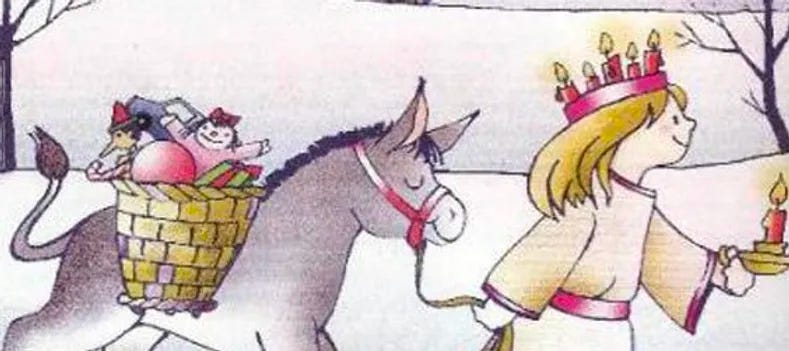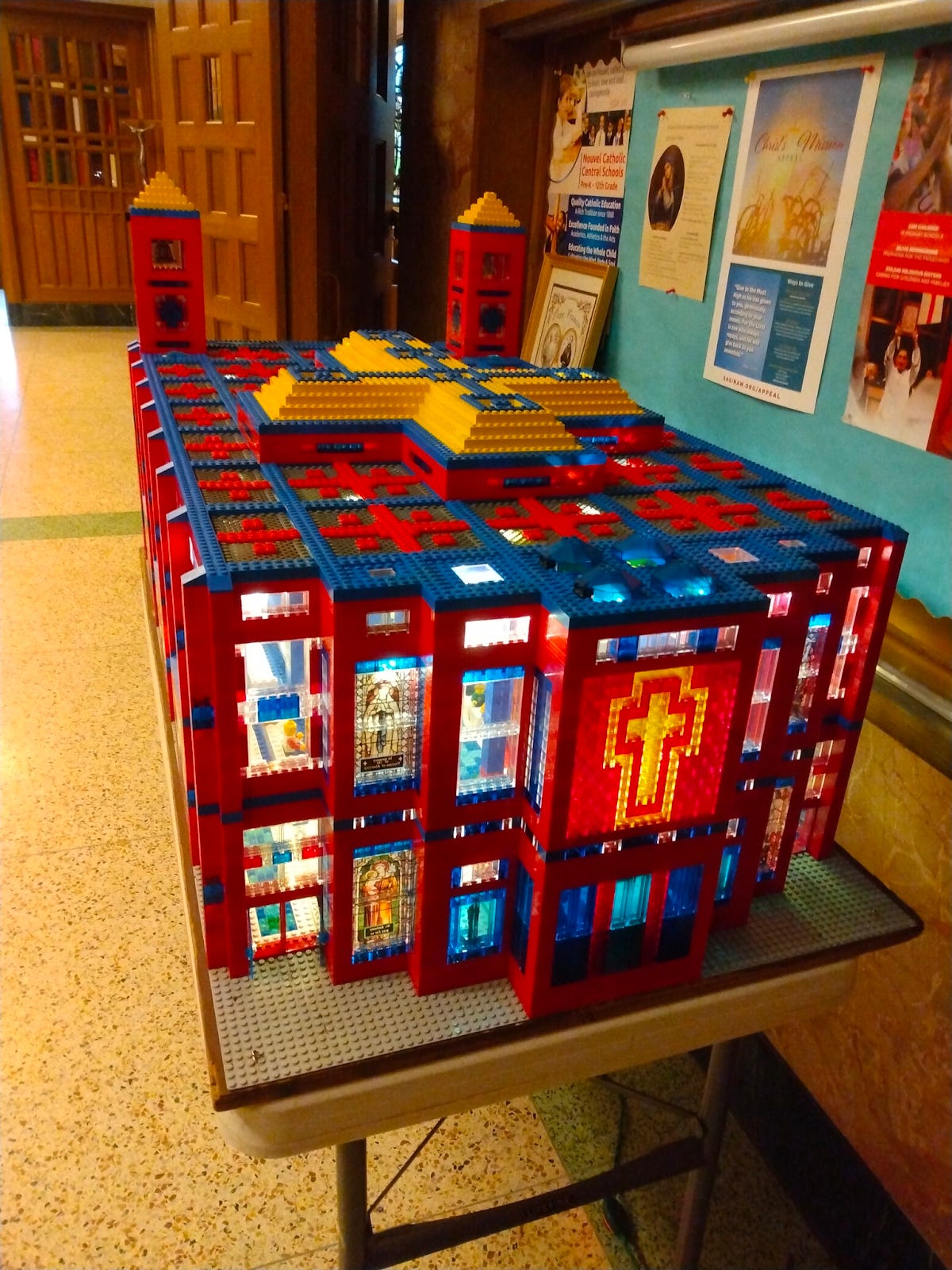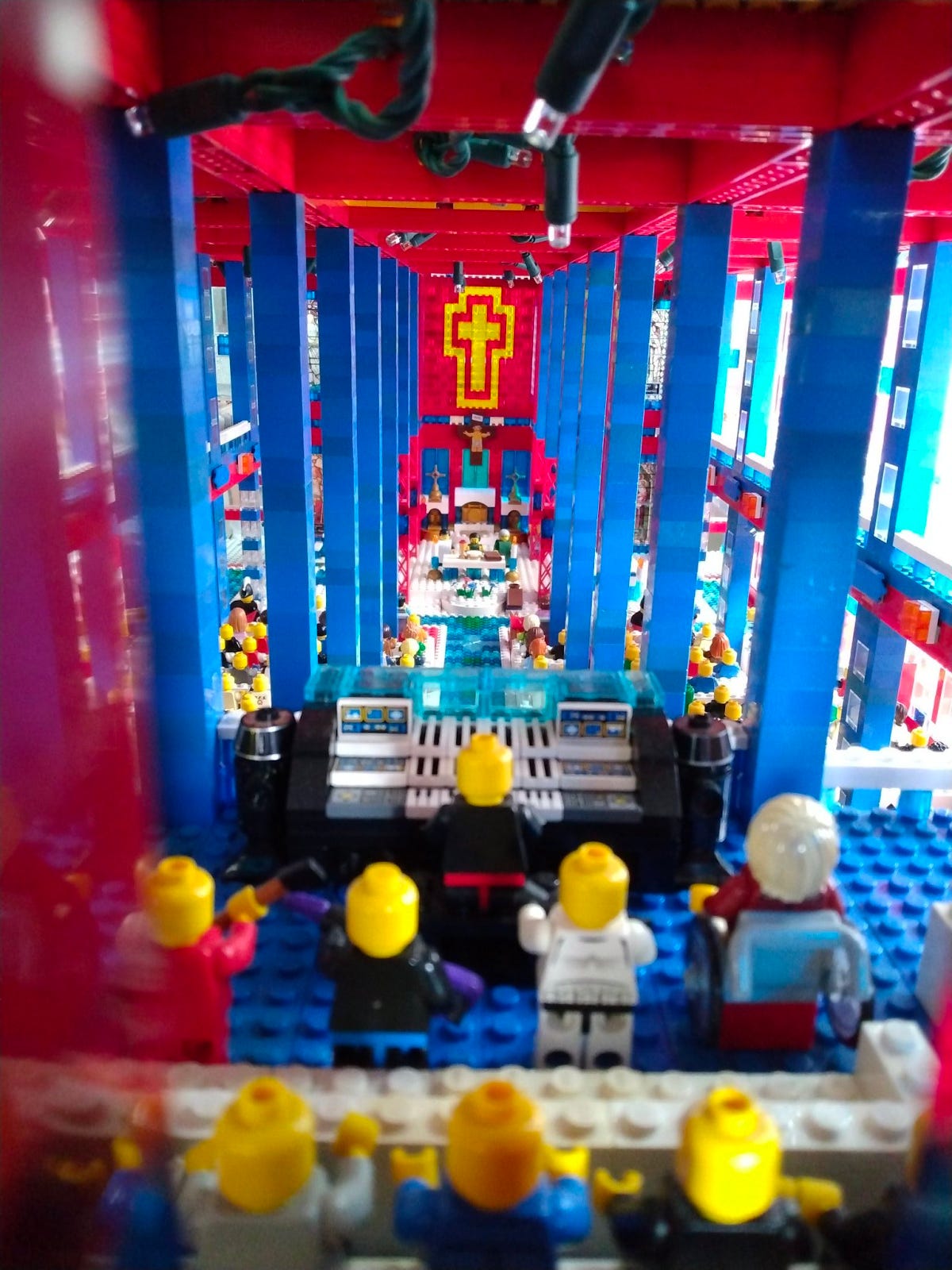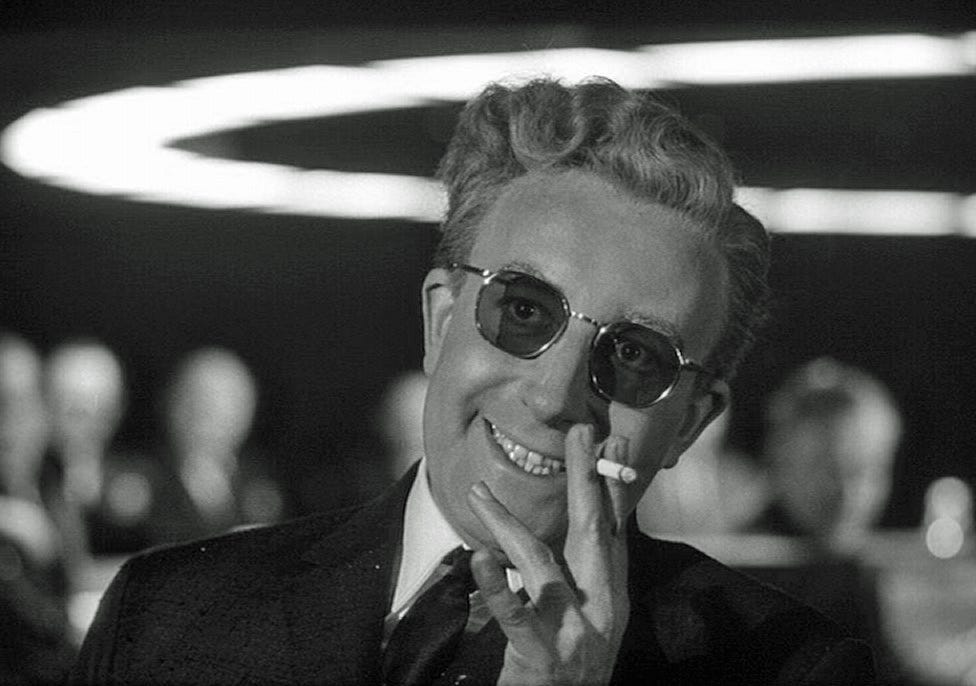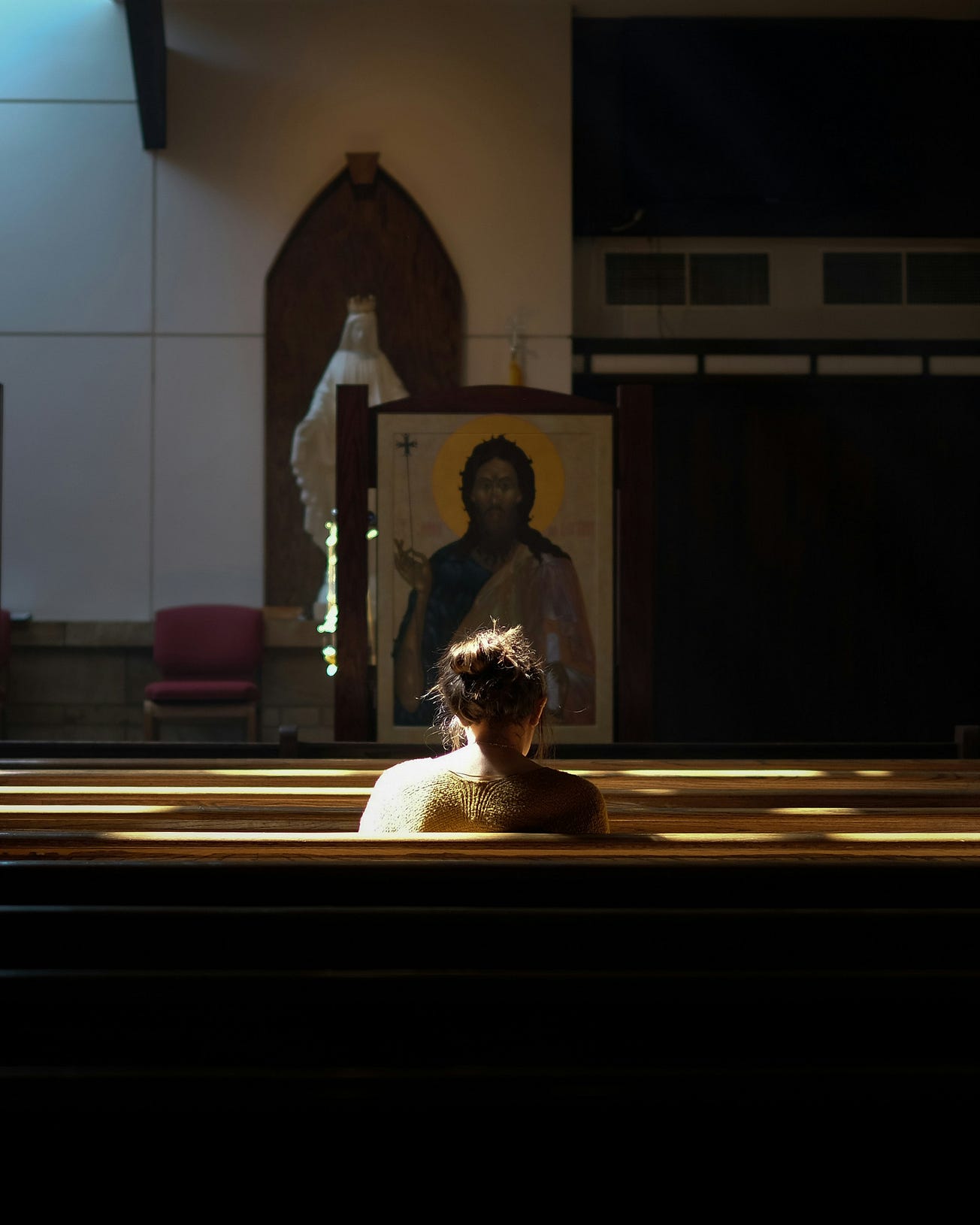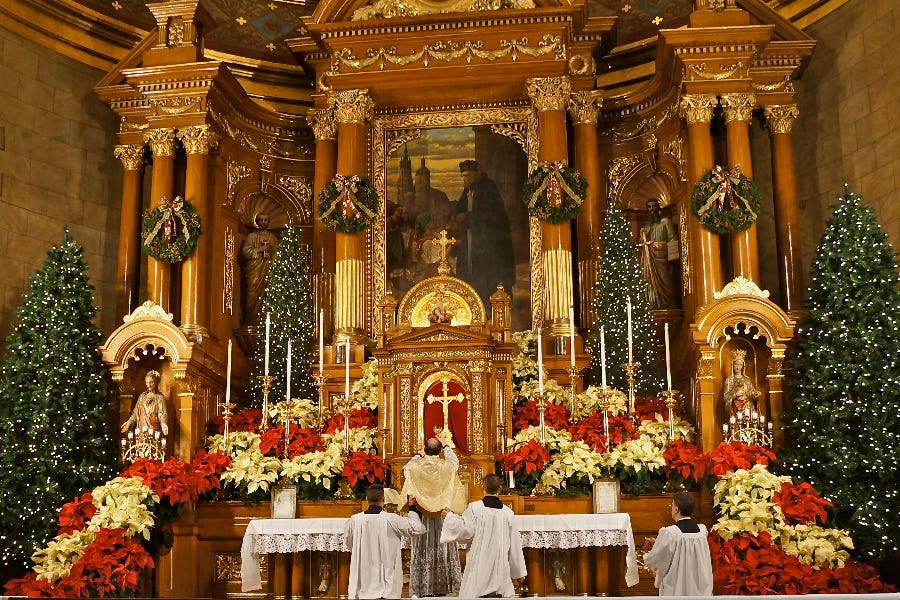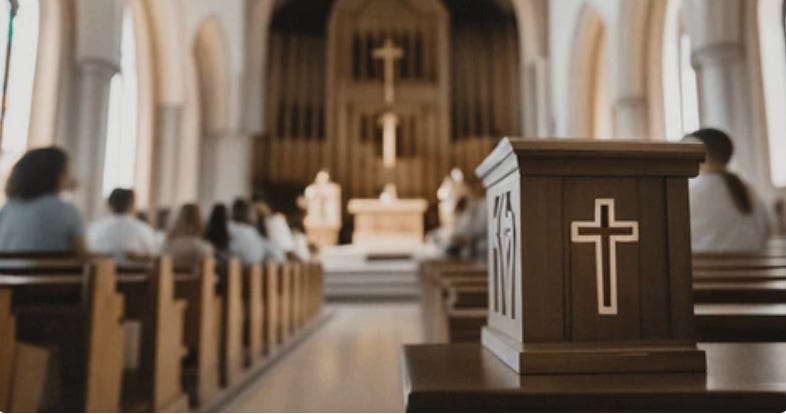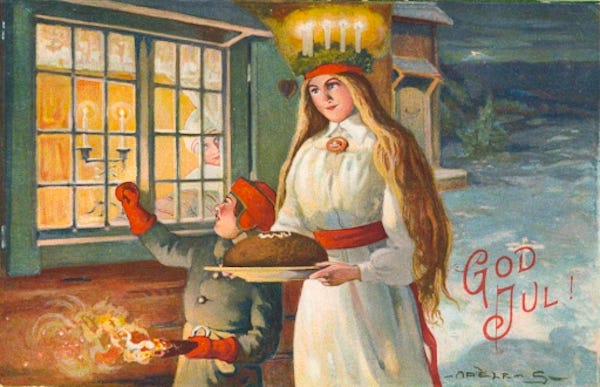
Hey everybody,
Today is Santa Lucia Day, the feast of St. Lucy, who was executed in the early fourth century, after a life of consecrated charity to Christians hiding in the catacombs of Sicily.
According to some legends, St. Lucy wore on her head a wreath with lighted candles in those catacombs, as she brought food and water to Christians hiding from the Diocletian persecution.
In Scandinavian countries, the story of Santa Lucia is remembered with a number of customs — including Santa Lucia festivals, in which towns elect their own St. Lucy, to lead a parade of children after dusk, while wearing a candled wreath.
In a Swedish tradition that began in the 1700s, the oldest daughter of the family brings her parents and siblings coffee and baked goods in bed — and I think she wears a candle wreath to do it. At least that’s how my mom and dad told it when they encouraged my older sister to serve coffee and donuts each Dec. 13.
Some Swedish churches also celebrate the feast with a Sankta Lucia concert:
In northern Italy, Santa Lucia is said to visit family homes in the early hours of Dec. 13, bringing presents to children, and riding a donkey. Families leave out coffee and cake for the saint as she makes her way from home to home, and they leave carrots and water for her donkey.
In Syracuse, Sicily, where St. Lucy was martyred, processions carry a statue of the saint on a tour of the city’s cathedrals, which culminates at the sea, and with fireworks:
In short, for much of Europe, Santa Lucia Day brings with it the kinds of festivities, gift-giving, and merriment that many of us expect to celebrate in a few weeks, on the Feast of the Nativity of the Lord, Christmas.
Why?
Because St. Lucy is a witness to the light of Christ — and in even cultures in which Christian discipleship has mostly fallen by the wayside, there is a longing in every human heart for the light shining in the darkness, the light not overcome by that dark.
“In Him was life, and that life was the light of men.”
Santa Lucia - the saint of light - spread that life, even to her death.
May we bear witness to the very same Light. And may He illumine our hearts.
—
The news
It’s the time of year for talking with Santa Claus, and we at The Pillar wanted to check in with St. Nick ourselves — just to make sure we’re on the right list and all that.
So this week, Michelle La Rosa talked with Darin Reis, a North Dakota Catholic, a father of nine, and a pretty convincing Santa Claus. Reis, who dons a red suit and dyes his beard white for the holiday season, told Michelle that he’s found a certain spirituality to playing Santa Claus —
“You can get really wrapped up in the commercial aspect of Christmas. Just past Halloween, you're going to Walmart and all the Christmas stuff is out, and things like that. We try not to get wrapped up in the commercial nature of Christmas.
But I don't think there's any harm in the concept of Santa. We talk about how it's the personification of that spirit of Christmas. God loved us so much he gave the ultimate gift; his only son. So, Christmas for us should be not about receiving so much as giving gifts to others.
But also God gives us the opportunity to see him and be with him in heaven, and I think Santa is a kind of foreshadowing of that for kids…”
Darin, whose Santa beard is the real McCoy, also talked about “fake-beard Santas,” Santa skeptics, and the kinds of - heartbreaking - questions Santa sometimes gets.
It’s an interesting read, from a sincerely Catholic Santa. And Michelle had to go almost to the North Pole - all the way to North Dakota - to get it.
—
Meanwhile, former Vatican auditor Libero Milone has his own ideas about who belongs on the n*ughty list, and he’s especially concerned about financial corruption in the Holy See.
But while Milone filed a lawsuit against the Vatican Secretariat of State last month, the suit has hit delays— and Vatican attorneys seem to be stalling it.
—
Bishop Franz-Josef Bode made headlines in September, when he announced he would not resign from his German diocese, despite an independent report, commissioned by the bishop, which accused him of reassigning priests who were credibly accused of sexual abuse or misconduct, or “even entrusted them with leadership tasks in youth pastoral care.”
Bode acknowledged his negligence, but said he would stay in office because he was uniquely qualified to lead the Diocese of Osnabrück through a reform process he had developed.
In September, many Catholics expressed surprise that the matter of Bode’s resignation was up to him, and not to the pope, given the nature of the bishop’s admitted administrative failings.
Well — It might not be up to Bode for much longer.
Bode is facing a Vos estis lux mundi complaint regarding his leadership, which has been forwarded to the Vatican’s Dicastery for Bishops, and will most likely be investigated by Archbishop Stefan Heße.
Among the interesting things about this case is that the Archdiocese of Hamburg has freely admitted that the complaint was filed, has been sent to the Holy See, and could soon be investigated. That transparency would stand out in the United States, where only some Vos estis proceedings, but not all, are officially recognized or confirmed by the apostolic nunciature or by the dioceses involved — and without clear rhyme or reason about why some are kept secret, and others admitted.
In any case, read about Bode’s anticipated Vos estis investigation, right here.
📰
—
If you pay attention to the USCCB, you know that most of the important work at bishops’ conference takes place behind the scenes, and away from the public portions of plenary meetings.
If you’re interested in how the conference works, give this a read.
—
The first Catholic comic book was probably “Treasure Chest of Fun and Fact,” a brightly colored magazine featuring adventure stories and lives of the saints delivered to U.S. parochial schools in the 1940s and 50s.
The best-known Catholic comic book might be Marvel’s 1982 “The Life of Pope John Paul II,” which captured the excitement generated by the charismatic Polish pope’s election four years earlier.
But Philip Kosloski, the founder of Voyage Comics, is himself a pioneer in the world of Catholic comic books — he aims to use the contemporary medium and language of comic books for catechesis and evangelization. And Kosloski is having real success.
The author of comic books about saints, like Carlo Acutis, and books with traditional heroes and Catholic themes, like The Phantom Phoenix series, Kosloski has a lot to say about art, comics, evangelization, and Catholic storytelling:
“In many ways, comic books are simply a continuation of the Church’s long history of creating artwork to tell a story. This can be seen in many churches where the stained-glass windows tell a sequential story, summarizing salvation history.
It simply makes sense to use comic books as a tool for evangelization, as it combines art and words in a compelling format. Comics can be used to tell the stories of the saints as well as original stories that are rooted in the Catholic faith.”
This is a cool interview. Read it here.
—
I wanted to commend to you guys the work of John Kraemer, a Michigan Catholic living with a form of cerebral palsy, and creating extraordinary recreations of Catholic churches, constructed from Lego, and displayed in parish churches in Michigan.
John has been building these churches for more than 20 years — and this year, his project is especially worth seeing.
The windows in these churches are, to my mind, most especially impressive:
Look inside:
Start your day with Starting Seven - a daily news roundup in your inbox.
—
Bottling the sun
Federal scientists are expected to announce today that a nuclear fusion experiment in a California laboratory shot hundreds of lasers at a tiny piece of metal, triggering a chain reaction ending in the fusion of hydrogen atoms into helium. More to the point, they’re expected to say that the energy generated in that fusion was more than the energy required to produce it — that a nuclear fusion experiment yielded net energy gain.
That - scientists will tell us - is a vital step in the path toward clean, renewable, cheap, and near limitless electricity for all.
Well, listen, don’t believe everything you read.
First, we should understand that while the feat described is pretty cool, it does not mean that we’re five minutes from the consequence-free production of unending electricity. Far from it.
First, the net energy gain is a pretty qualified gain, which depends on a strict definition of “energy involved in the process.”
Second, at the moment, this is not a whole lot more than an extremely expensive, very impressive and quite complicated party trick.
Yes, it involves hundreds of lasers, which is pretty cool, but it's not yet ready to be replicated in the manner necessary for commercialization. Perhaps the developments will come quickly, but they ain’t here yet. Fusion is still a bit of a paper promise at the moment.
But most important, consider the utopiast fantasy being peddled here — that we’ve learned how to bottle the sun, and that doing so will lead to more human fraternity, equal benefit to all, and shortcut for our stewardship of the earth.
This would be effectively the crowning triumph of the Enlightenment’s promise — that we can conquer nature, the very sun itself, and thus usher in a new era of human peace, prosperity, and friendship. Gene Roddenberry waited his whole life in the sanctuary of science for just that moment — and wrote himself a final frontier in which it came true.
But narratives like that don’t take into account the ubiquity of human sinfulness.
If the coronavirus pandemic had lessons for us, they were that we can not master the universe, we can not conquer our mortality, and we can not master our fallen human nature.
No matter your politics, or your views on the pandemic, just think seriously about the last few years. Think about the people you know, and the people you saw on TV. Think about how we acted when presented with a reminder of mortality, and the limits of our control over the world around us.
Think about whether a cogent and rational assessment of transcendent goods and the human person has guided most responses to the pandemic.
Yes, the technology developed pretty rapidly during the pandemic is impressive – but few can deny that we've experienced just a bit of global social instability.
If we have the power to make stars inside of power plants, could anyone imagine it will launch well for humanity?
I’m not an optimist. I expect that if we get anywhere close to production-level nuclear fusion, we’ll see greed, self-promotion, and self-protection dictate the narrative. There will be winners and losers. There will be conspiracy theorists, and those who unblinkingly “trust the science.” And none of that will be pretty.
Whatever the technology allows for, human sinfulness will enter into the picture — and with hydrogen fusion already in the frame, the prospects for us will be, to say the least, volatile.
Technical knowledge does not equal wisdom, or virtue.
We learned 77 years ago in Japan that violently splitting atoms is not a just path to peace, or the salvation of mankind. Smooshing them together isn’t either.
At least not without grace.
Whatever happens with fusion - and I don’t expect much - knowing how to do more stuff doesn’t mean we’ll do it for the right reasons, or in the right way, or to the right effect.
And Christians already know that we can not master nature, and we can’t even really master ourselves.
Only Christ can do those things.
See, that’s the thing. Christians are not always optimists, but we do have hope. And we know that Jesus Christ is the true and lasting savior of the world.
Maybe I'm too pessimistic, and nuclear fusion technology is finally just around the world, and will be distributed with peace and good will for all. Maybe.
But in short, if we expect to use this technology well, as with any technology, it will be because Christ has transformed our hearts and imbued us with virtue.
It may offer powerful prospects, but the bright light for humanity is not nuclear fusion. The bright light for humanity is Jesus Christ.
Just like St. Lucy knew.
We’re waiting for Him this Advent. May His coming be soon.
And, listen, maybe you think I'm wrong about all this. Ed certainly has a different take on it. If I should be bullish on the prospect of fusion, let me know in the comments below.
—
Finally, if you think of it, do pass on this newsletter to someone who you think will be interested. Or, heck, just sign up your friends and family for free Pillar subscriptions, and then tell them it was a Santa Lucia present.
Growing the community of Pillar readers helps us do more and better journalism – so whether you love The Pillar, or think we've got room to improve, the way to help is to encourage your pals, your pastor, and your mother-in-law to get The Pillar Post in their inbox.
Thank you.
And as always, please be assured of our prayers. And please pray for us. We need it.
Yours in Christ,
JD Flynn
editor-in-chief
The Pillar
PS:
Fusion probably doesn't mean the end of the world as we know it, but there's never a bad time for this excellent cover of R.E.M.'s classic:

